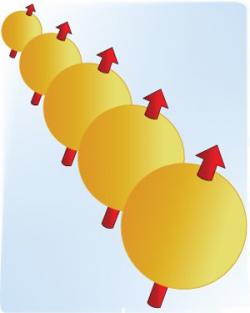Researcher confirm the existence of electron-generated magnetic fields
Researchers from the University of Delaware confirmed that electrons generate a magnetic field. In materials made from two layers of a heavy metal and a ferromagnetic material, the spin current diffuses into the ferromagnetic material. When this happens, a magnetic field is generated.
This magnetic field does not radiate beyond the ferromagnetic material (unlike regular magnetic fields). This is important in applications such as MRAM in which shielding the magnetic fields between memory cells is difficult. If devices use the new magnetic field it may be easier to create high density MRAM cells or other devices.

